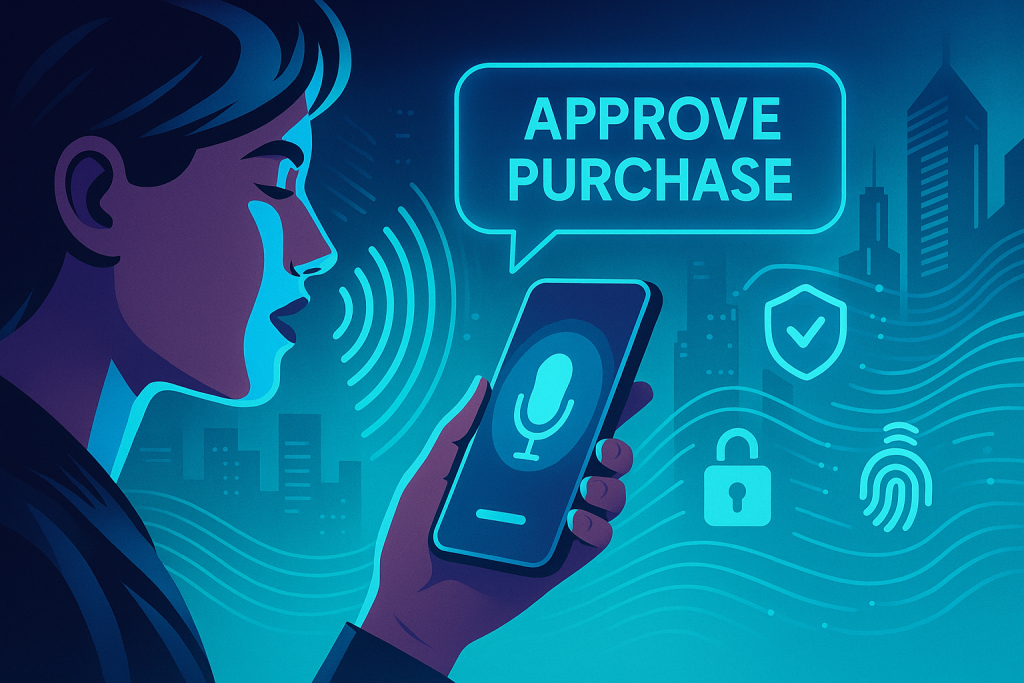The digital landscape in the United States is undergoing a remarkable transformation, ushering in the new era of voice payments. This innovation promises to enhance the way Americans handle their financial transactions, offering a blend of security and convenience that was previously hard to imagine.
As consumers gravitate toward more intuitive and instantaneous methods of managing their finances, voice payments are emerging as a popular choice, leveraging advanced technology to streamline the process. With this exciting development, the future of financial transactions appears set for a major overhaul.
The rise of voice-activated financial transactions

The ascent of voice-activated financial dealings is unmistakably a sign of the times, indicating a change in how people want to interact with their money. Recent studies suggest a significant uptick in the adoption of this payment method, driven by its promise of speed and simplicity.
For many, the allure lies in the hands-free operation and the reduction in clerical errors that can accompany traditional banking interactions. These facets create a user interface that feels futuristic while being grounded in secure technology.
Voice payments technology currently supports a myriad of financial services, ranging from checking account balances to making direct orders online. These tasks that would once require manual input are now executed almost effortlessly.
Interestingly, banks and financial institutions are rapidly updating their infrastructure to support these changes, indicating the scale at which this technology is expected to proliferate. With banks now enabling voice commands to execute transactions, a growing number of people are eager to experience banking reimagined.
Investment and expansion in voice technology
The financial sector is not just observing the rise of voice-activated transactions; it is investing massively in this area. Significant capital is being allocated toward refining voice recognition software to ensure precision and security.
Advanced algorithms are being developed to understand and process varying accents, dialects, and intonations, guaranteeing that the systems can cater to a diverse range of users. This investment is crucial, as it also addresses security concerns associated with voice payments.
One of the imperative steps in the enhancement of voice-activated payments is addressing security, a concern that has been forefront in consumers’ minds. Biometric authentication is being deployed alongside voice authentication to provide a multi-layered security approach.
This strategy ensures that voice payments are not only convenient but also as secure as possible. Institutions are exploring blockchain as a supportive technology, which promises an additional layer of transactional authenticity.
The societal impact
The implications of this innovative technology extend beyond the simple convenience of paying with your voice—impacting societal norms and behaviors around money management. The role of traditional banks is being redefined, as brick-and-mortar locations see reduced foot traffic owing to the ease of completing transactions from virtually anywhere.
Moreover, the emergence of voice payments is forging a new path toward financial inclusion. By simplifying complex transactions, individuals who previously found traditional financial systems cumbersome can now engage with these systems more easily.
The integration of voice technology into financial transactions reflects a shift toward a more digitalized interaction, heralding changes in consumer habits. As individuals become more comfortable with speaking to machines, this comfort could extend to other areas such as healthcare and government services, marking a significant societal shift in interaction with technology.
Balancing security and convenience
As voice transactions continue to evolve, striking the perfect balance between security and convenience is paramount. The adoption of advanced security measures like voice biometrics, coupled with encryption protocols, is ensuring that user data remains safe.
The allure of this technology lies in its ability to allow users to multi-task, enabling them to perform financial transactions while on the go or engaging in other activities. However, as with all technological innovations, it is crucial that users remain vigilant to potential vulnerabilities.
Financial institutions are consequently adopting rigorous security measures to ensure a safe user experience. The integration of AI-driven fraud detection systems is becoming standard practice, identifying unusual activity patterns indicative of fraudulent behavior.
Consumer education remains a cornerstone of adopting any new technological advancement. Its importance cannot be overstated, especially in the realm of financial transactions. Educating users on best practices for secure voice payments will empower them to leverage this technology effectively and safely.
The road ahead: Setting the standards
The journey toward mainstreaming voice-activated financial transactions is ongoing, and as it progresses, setting industry standards is becoming critically important. Establishing universal protocols will ensure consistency in user experience and security measures across different platforms and devices.
As technology advances, it is equally important for ethical considerations to keep pace. Discussions surrounding data privacy and user autonomy in voice payments are necessary to address any legal or moral implications arising from increased uptake of this technology.
Ultimately, the long-term success of voice payments hinges on transparency, accessibility, and reliability. As we venture further into this new era, the goal is to achieve a harmonious blend of technological innovation and consumer trust.
